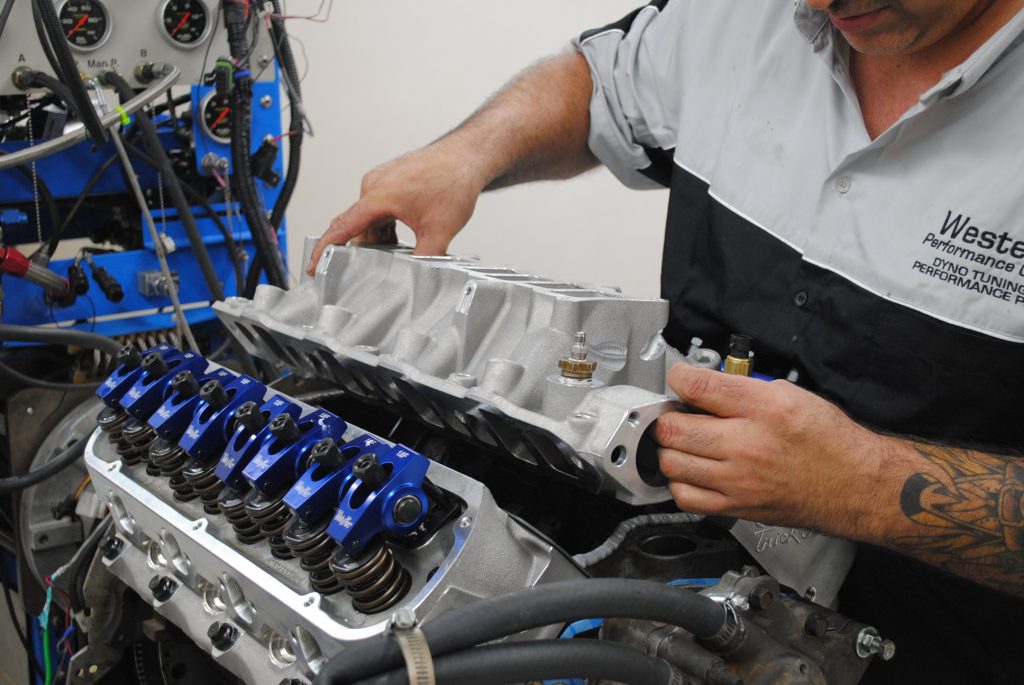
Here is a simple question: Do cylinder heads help determine the effectiveness of your Ford combo, or, does the combo help determine the effectiveness of the heads?
The reality is that both are true, as improvements in head flow certainly help the motor make power, but only on the right combo. One need only look at the restrictive factory Ford 5.0L heads to see how much performance potential a good set of aftermarket heads can provide.
But, by the same token, the combination must also be able to take advantage of what the heads have to offer, meaning the installation of a set of performance heads on an otherwise stock motor will offer limited gains. Not that the heads don’t work well, it’s just that there is nothing there needing the additional flow. As always, proper performance comes from a combination of components.
To demonstrate this fact, we installed a set of CNC-ported Trick Flow Specialties 185 heads on two different combinations, a milder 302 and a slightly wilder 347 Stroker.
How well did the Trick Flow cylinder heads do on each? Let the games begin!
Complementing the Cylinder Heads
While the heads certainly play a critical part of the power output of a Ford (or any) combination, they must obviously be matched to things like displacement, cam timing, and the induction system. Ported heads and a stock cam and intake will yield little results, installed as part of a package, though, the right heads can yield big dividends.
Recognizing this, the folks from Trick Flow put together Top-End Kits designed to work together to upgrade your 5.0L Ford to serious status. Naturally the stock H.O. intake, E7TE iron heads and mild stock cam were not designed with absolute performance in mind, so Trick Flow stepped in to fill the performance void. Their Top-End kit featured not only good heads, though we stepped up from the standard Fast-As-Cast Twisted Wedge heads to a set of high-flow, Street-Port, CNC 185 heads, but the complementing components as well.
Included in the kit were a Street Heat upper and lower intake, Stage-2 hydraulic roller cam (.542/.563″ lift split, a 224/232° duration split and 112° LSA) and even 1.6-ratio roller rockers. We also liked the fact that the kit included things like gaskets, head bolts and a double-roller timing chain. The kit from Trick Flow took the guesswork out of any Ford 5.0L build up. With extensive research and development behind the combo, you know what you are getting before you bolt it on.
Baseline Cylinder Head Testing on the Ford 5.0L
Prior to the installation of the Track Heat engine kit from Trick Flow, we ran the first of our test motors (a bone-stock 1994 Ford 5.0L) on the engine dyno to establish a baseline. Prior to running, we made a few notable changes to the 5.0L, including upgrading the stock 19-pound injectors to 42 pounders, adding set of Hooker long-tube headers and removing the MAF and air intake assembly. Rather than rely on the factory ECU, we dialed in the air/fuel mix and timing with a Fast XFI engine management system.
After dialing in the tune (12.9:1 AF and 35 degrees of total timing), the otherwise stock 5.0L produced 259 hp at 5,000 rpm and 320 lb.-ft. of torque at 3,600 rpm.
The Ford engineers obviously tuned the factory 5.0L for torque. One need only look at the small head ports, mild cam timing with long (and small-diameter) intake runners. A factory 5.0L feels plenty torquey and offered acceptable performance back in the 1980s and early 1990s, but the 302 was hardly what you would call rev happy. If the stock components didn’t limit the rpm potential, valve float certainly did.
Adding the Trick Flow Top-End Kit to the Ford 5.0L
Once the baseline test was run, we tore into the 5.0L Ford. Off came all the stock components, including heads, cam and intake to make way for the TFS components. We did reuse the factory hydraulic roller lifters, though with 140K miles, new ones might be a good idea. The Trick Flow aluminum heads were installed using the Fel Pro 1011-2 head gaskets and new head bolts supplied with the kit.
Despite the high mileage, the cross hatch was still visible on the little 5.0L. The stock pistons featured inline valve reliefs, but were sized for the smaller stock valves, not the larger 2.02/1.6 combination employed on the Twisted Wedge heads. Fear not, as the Twisted Wedge valve orientation actually improved P-V clearance. The new heads came supplied with the proper valve-spring package for our cam lift (and rpm), along with rocker studs and guide plates for our 1.6-ratio, aluminum roller rockers.
After a valve adjustment (1/2-turn) and installation of the slick cast-aluminum valve covers, we installed the upper and lower Track Heat intake sections along with a 75mm Accufab throttle body. We liked the fact that the Track Heat intake could be run with the factory fuel rail-already equipped with the necessary 42-pound injectors from Ford Racing.
After installation of the Hooker headers, the power output of the modified 302 jumped from 259 hp and 320 lb.-ft. of torque to 378 hp and 356 lb.-ft. of torque. Nothing like bolting on 119 extra horsepower!
Installing the Top-End Kit on a Ford 347 Stroker Motor
As impressed as we were with the extra 119 hp (closer to 160 hp gains at 6,000 rpm), we knew the CNC-ported Trick Flow Street Port 185 heads had a lot more flow and power potential than the little 302 could utilize. Knowing this, we installed them on something with more of everything, including displacement, compression, and cam timing.
To illustrate the 185 heads (flowing 300 cfm) could support even more power, we installed them on a 347 Stroker equipped with a Comp XFI236HR cam. The XFI Stroker cam featured .579″ lift, a 236/248-degree duration split and 114-degree lsa. This represented a jump in both lift (.037″ intake and .016″ exhaust) and duration (12 degrees intake and 16 degrees exhaust). Add to this the change in displacement and compression and you have a motor just begging for more head flow. The 347 test motor was run with an Edelbrock Performer RPM intake and 750 Holley carb.
Equipped with the Trick Flow 185 Street Port heads and the same Hooker long-tube headers, the Ford 347 Stroker produced 482 hp and 424 lb-ft of torque.
This represented a jump of over 100 hp compared to the smaller 302, but with 300 cfm to play with, even our 347 was only using a portion of the available power potential. I guess maybe these heads deserved something even bigger and better, maybe something like a 392, or heck, even 408 Stroker to tax the available airflow.
But those head games will have to wait for another day!
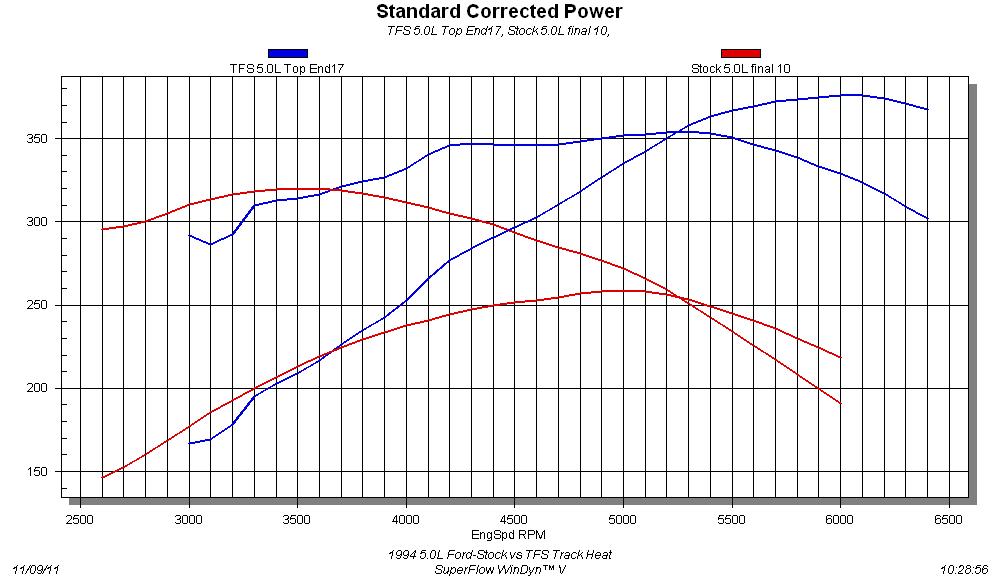
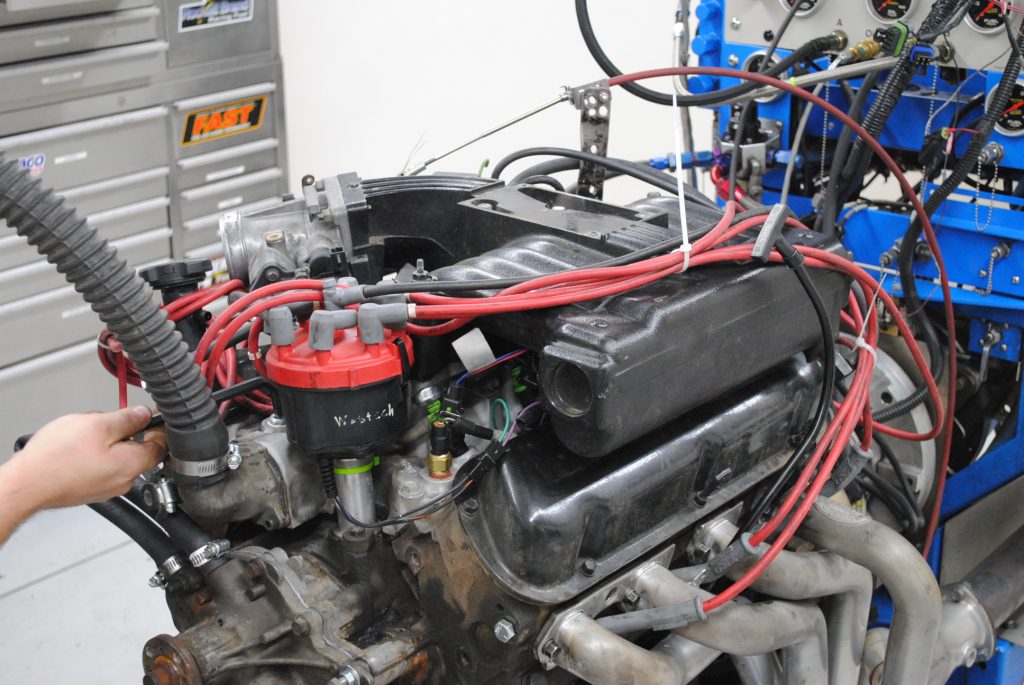
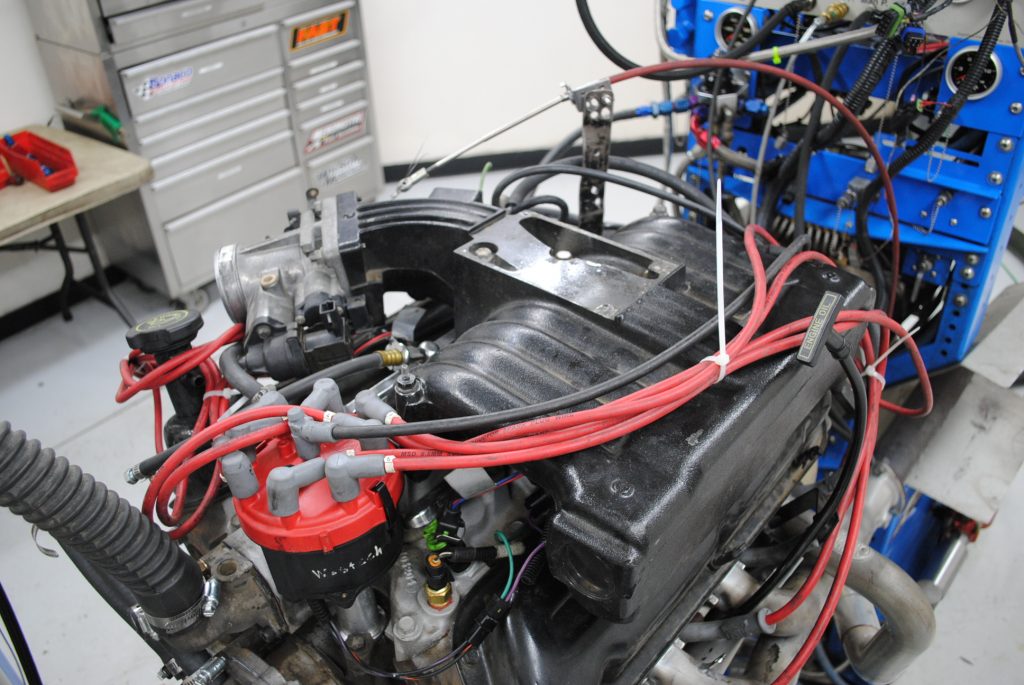
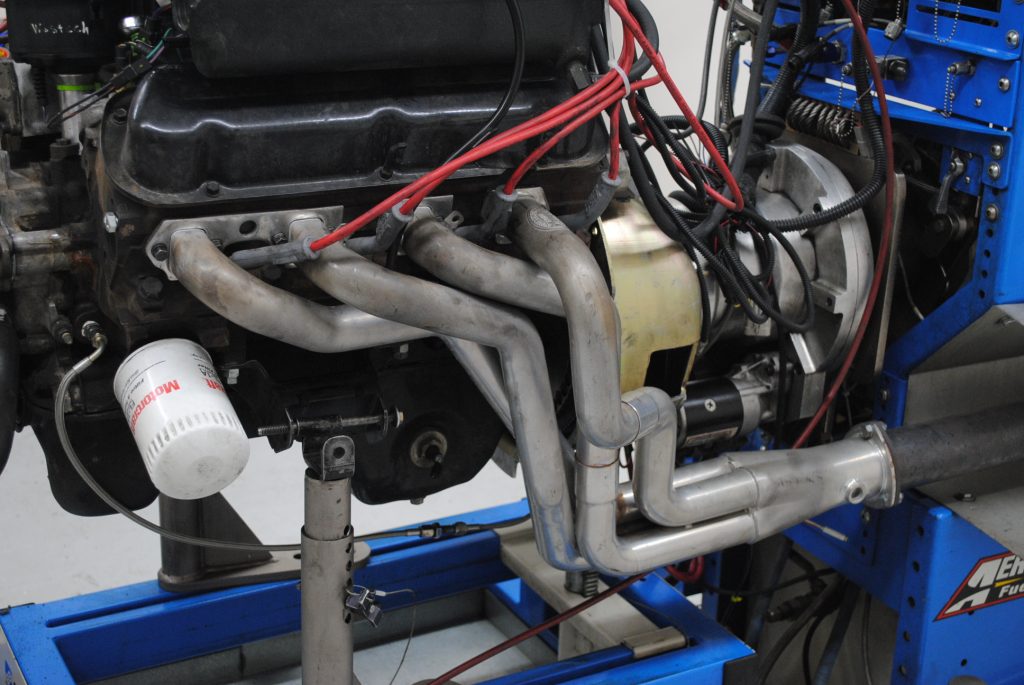
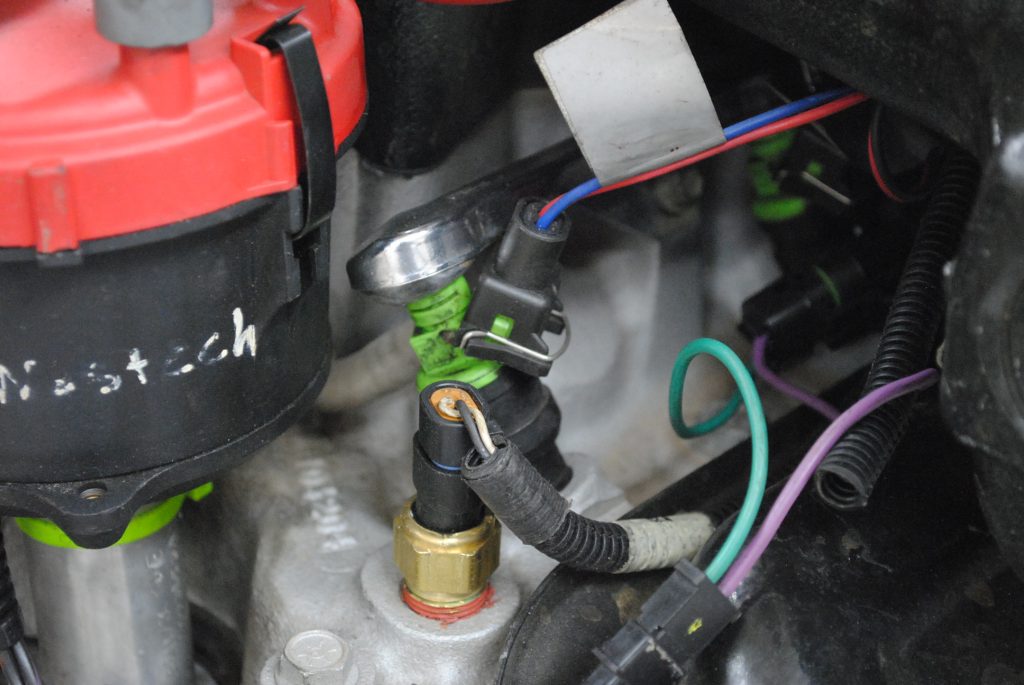
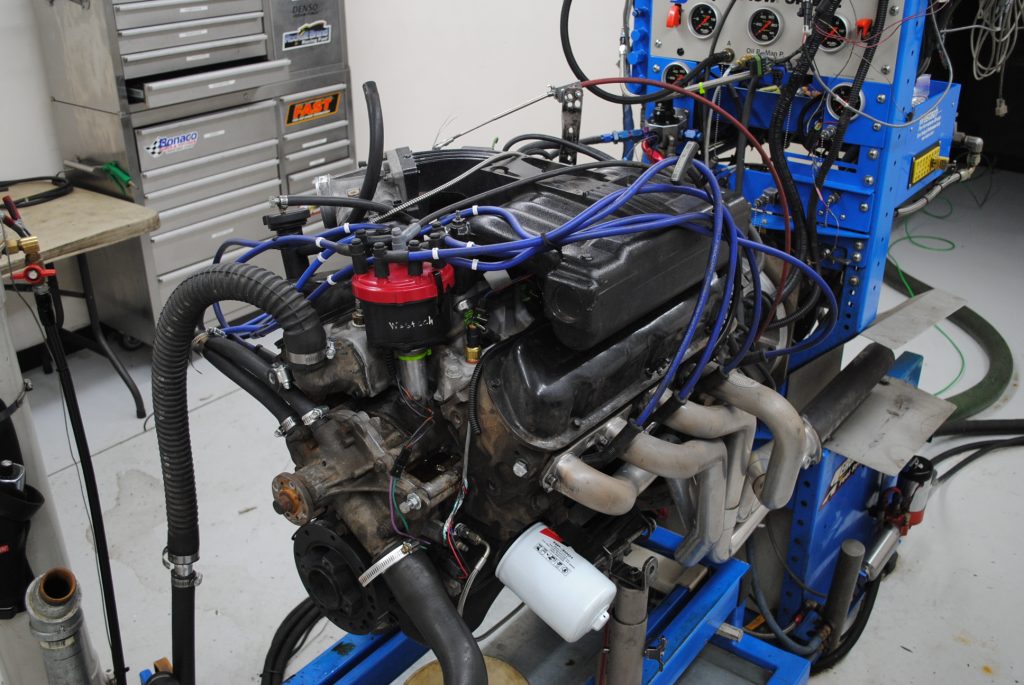
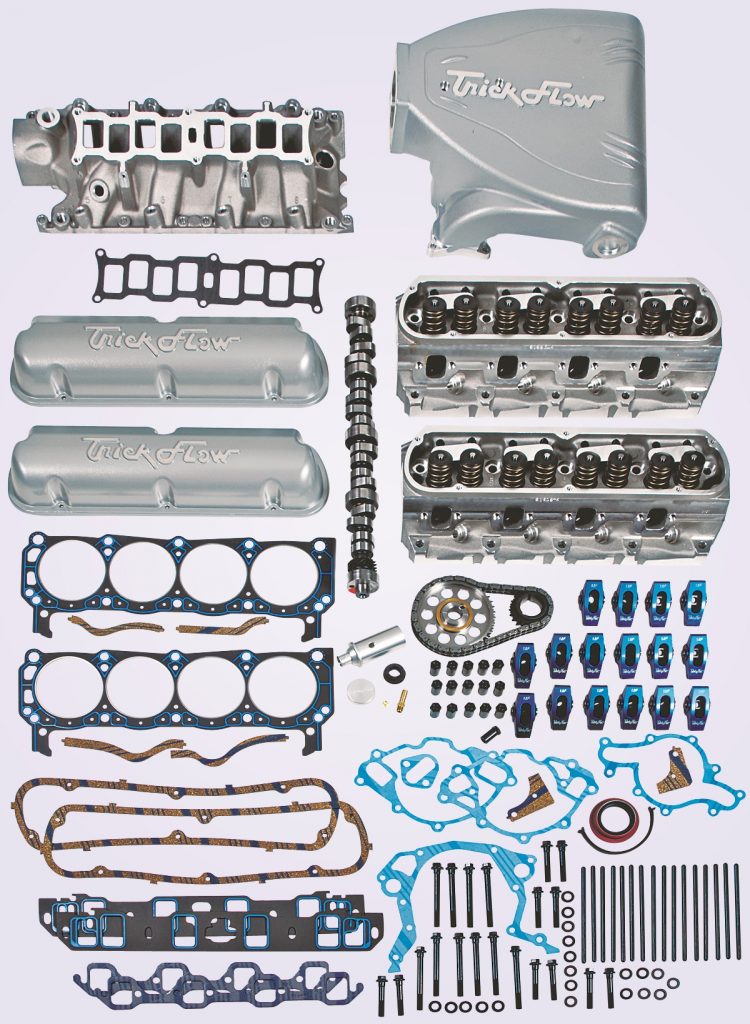
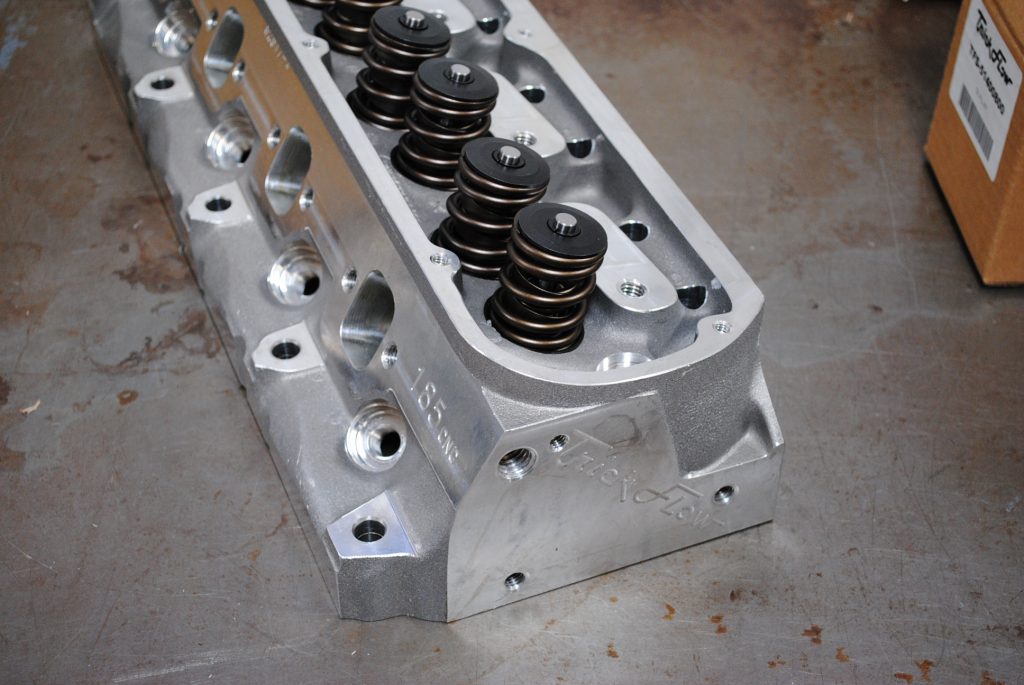
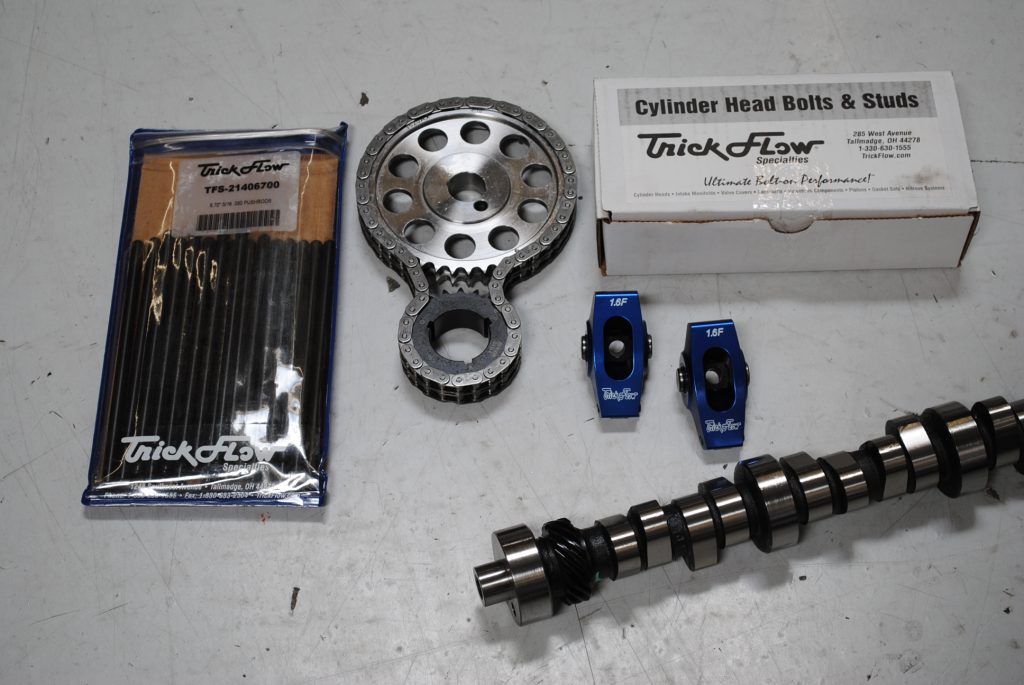
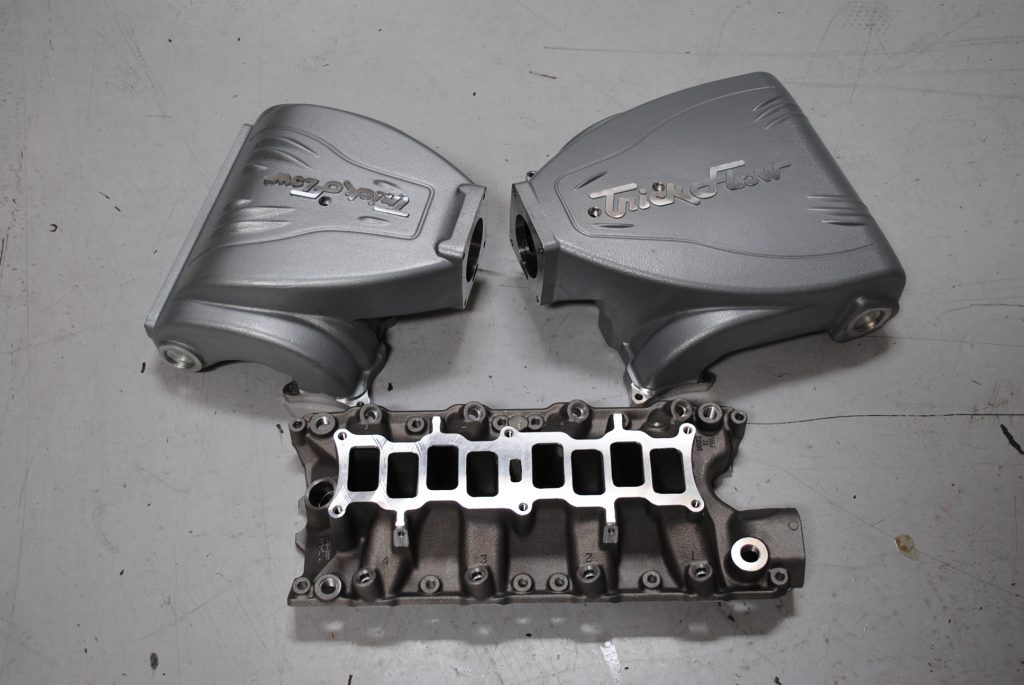
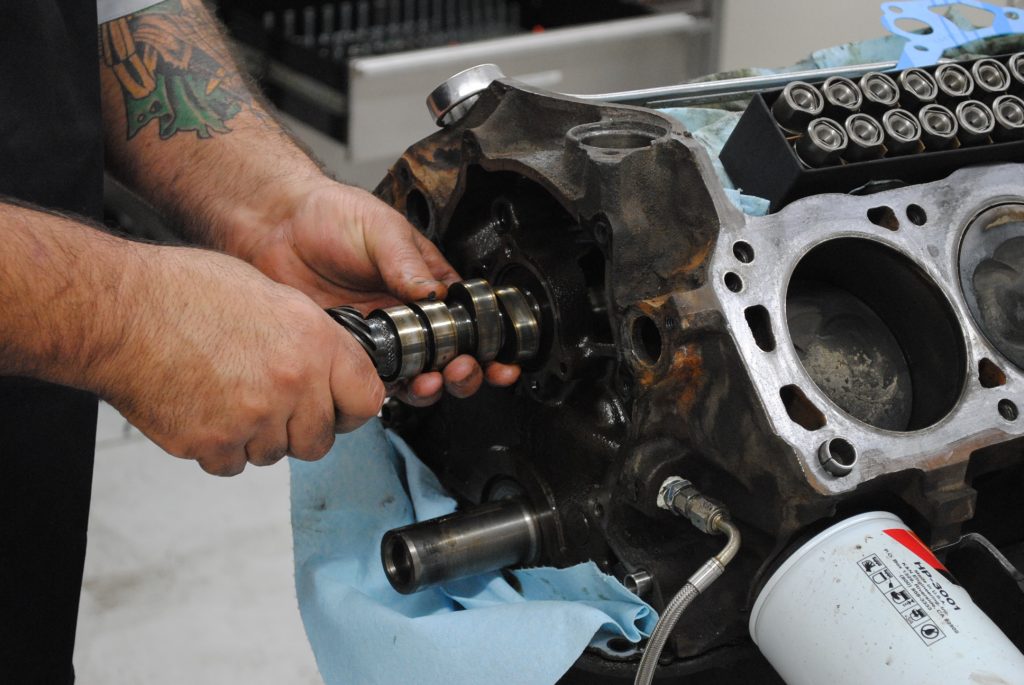
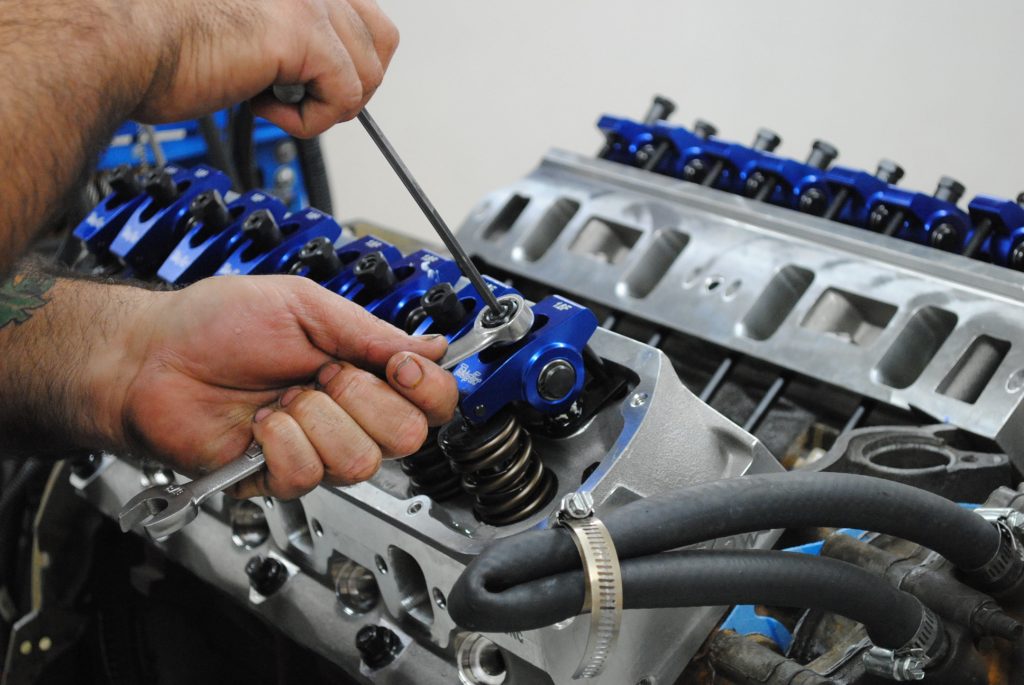
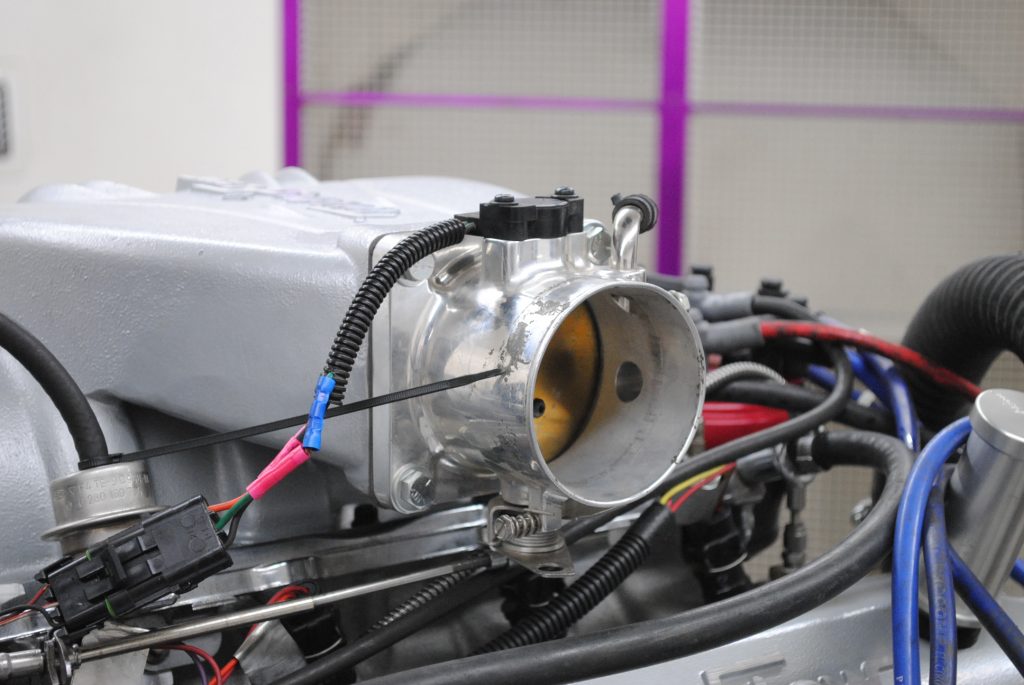
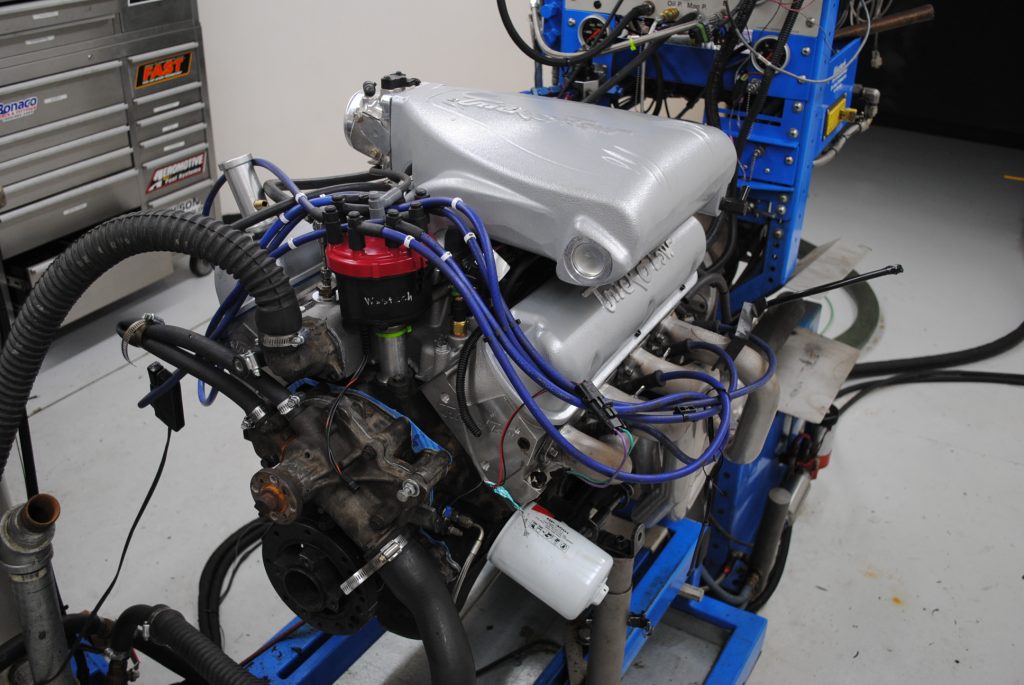
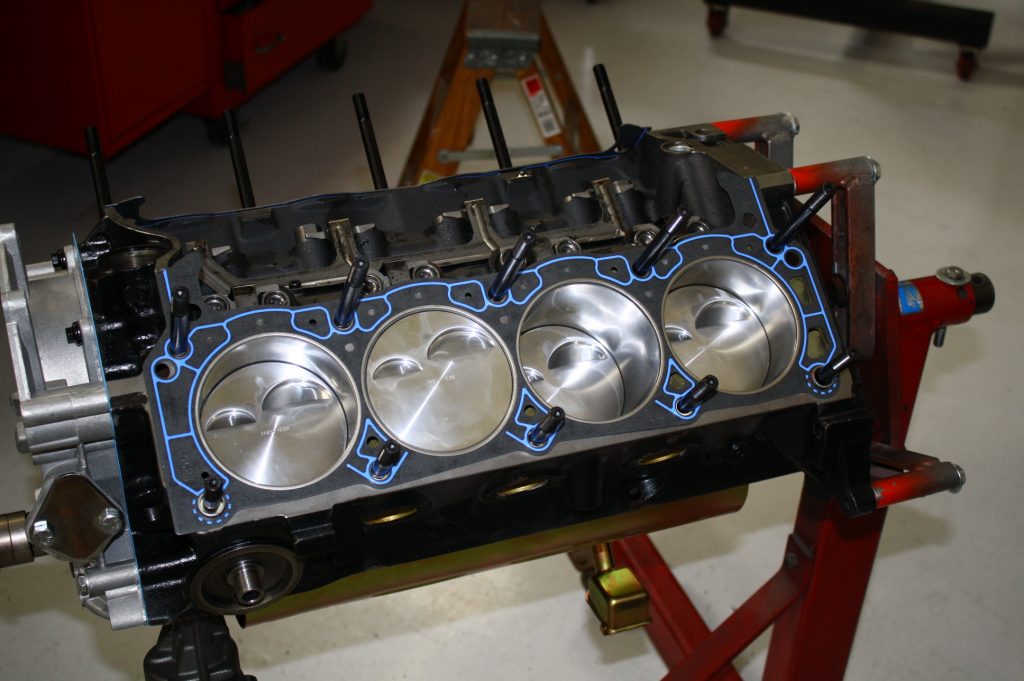
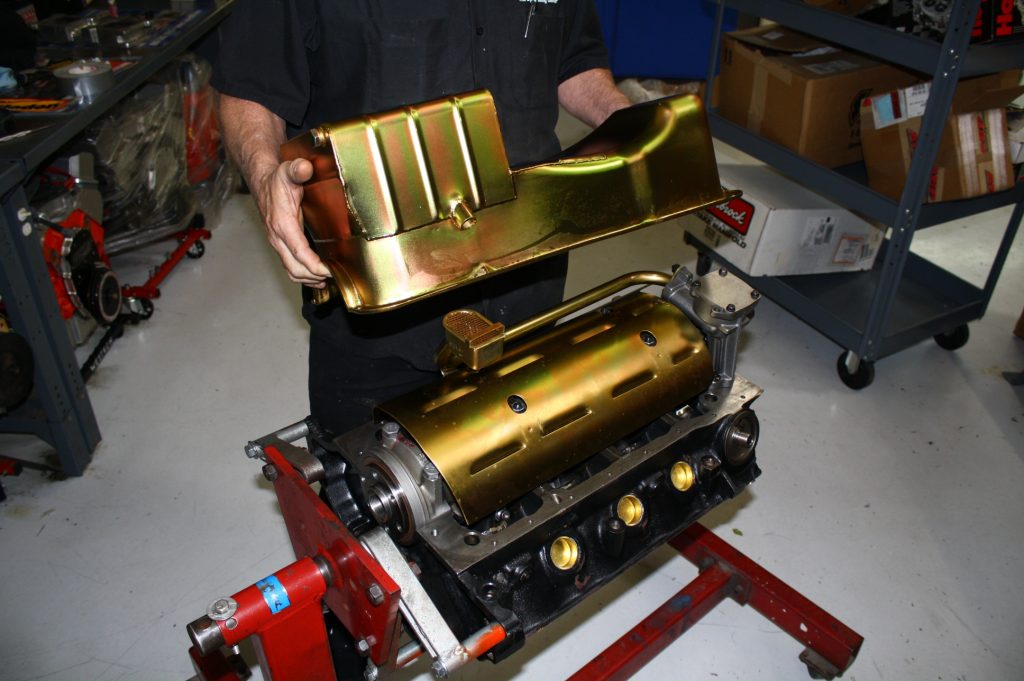
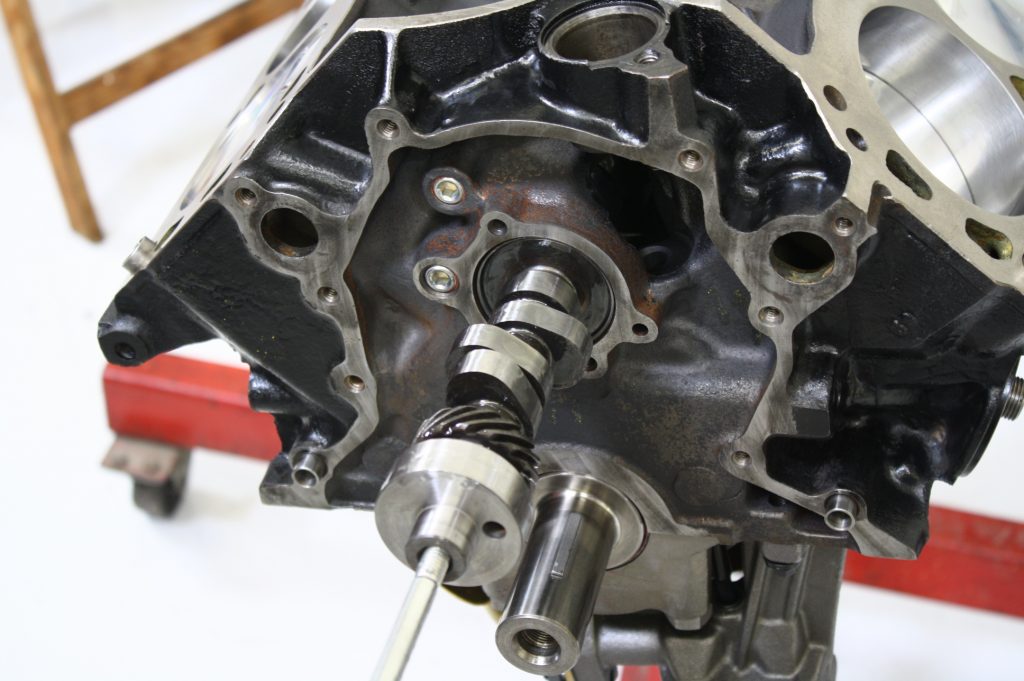
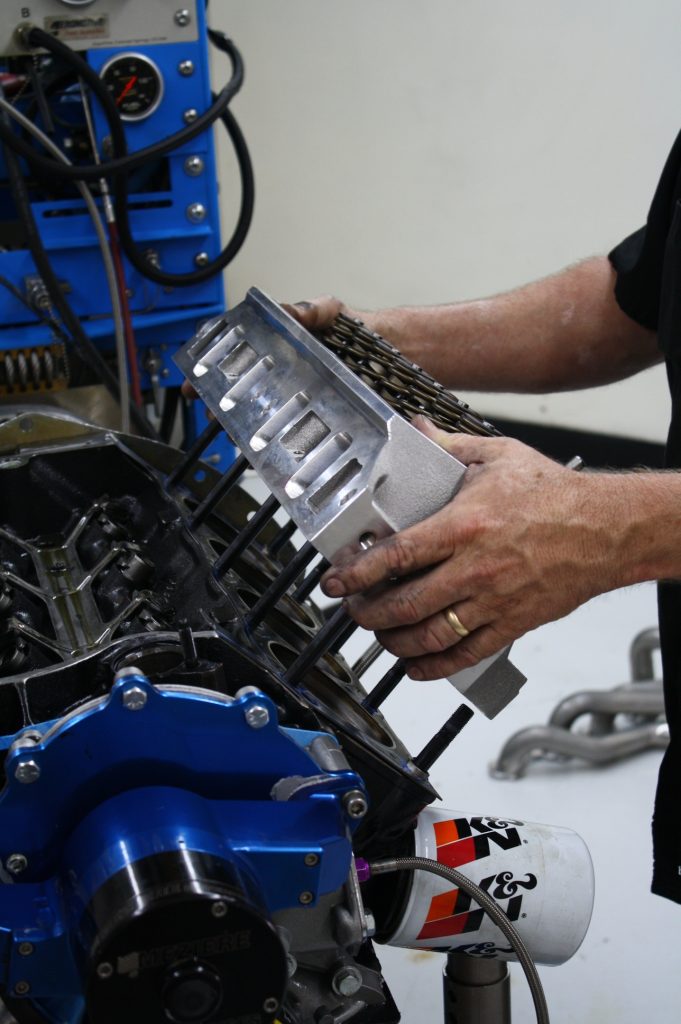
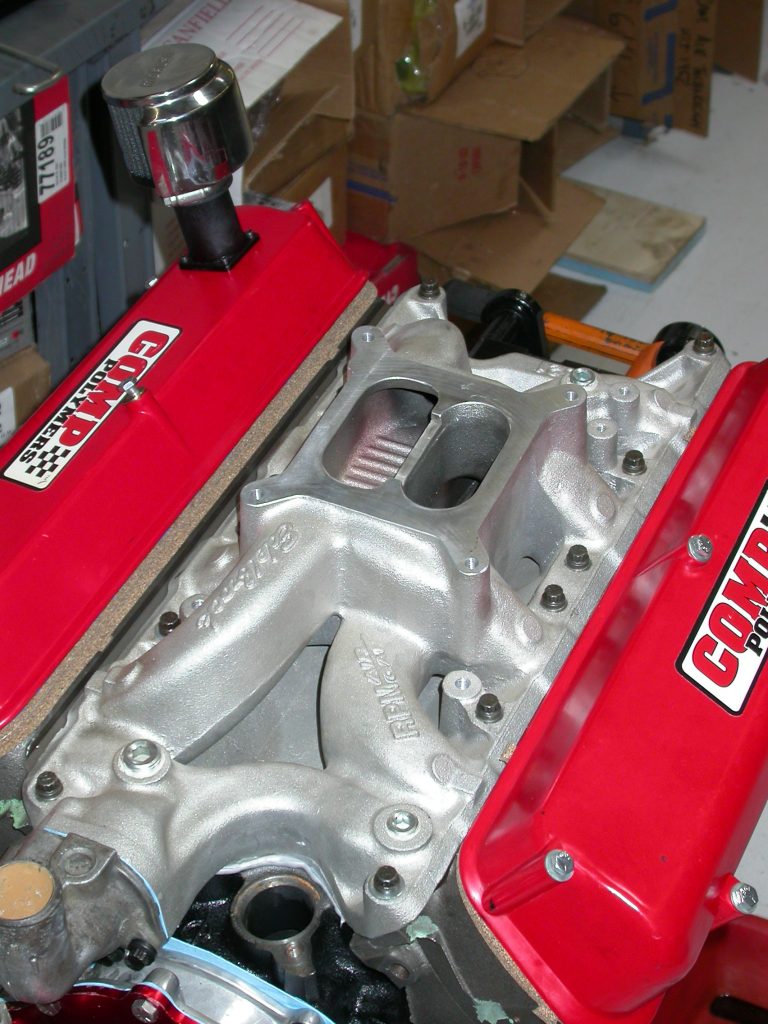
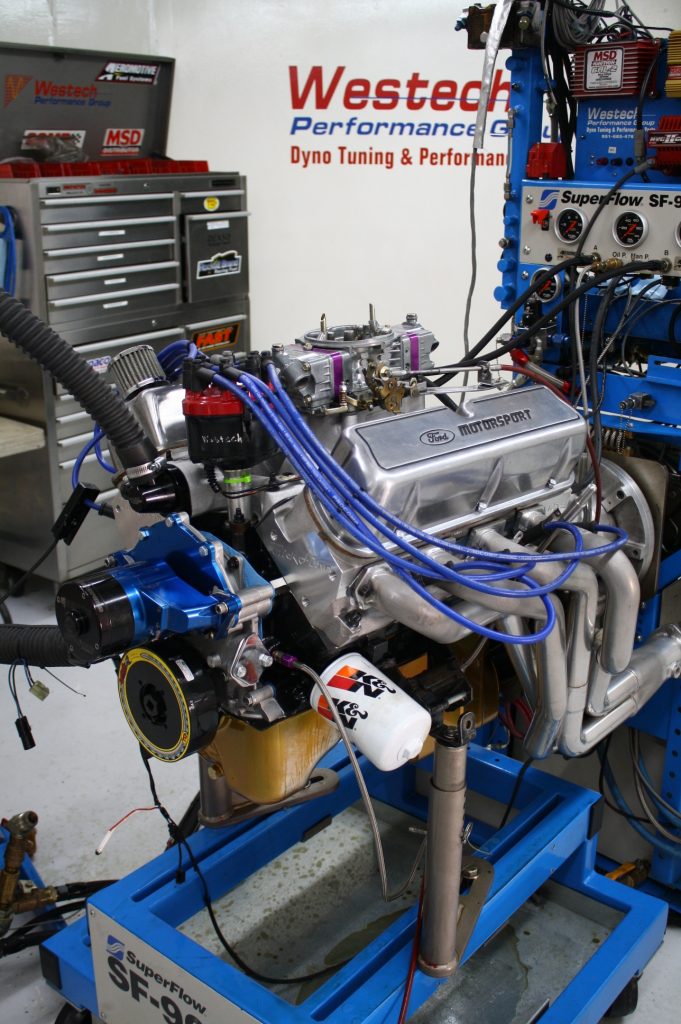

[…] Here is a simple question: Do cylinder heads help determine the effectiveness of your Ford combo, or, does the combo help determine the effectiveness of the heads? The reality is […] Read full article at http://www.onallcylinders.com […]
When you set out to do a test, you change one variable not nineteen. This story doesn’t tell you anything really.
Richard holder is the man
I sure would like to know how these Trick Flow 185 compare to the almighty AFR 185 (58cc). Ford small block owners hardly ever complained about low end torque, but we all know that the power band needs to move up an other 800 – 1000 RPM to stay street competitive in modern times. Another lacking point of information, is the fact that many people prefers the 331 stroker over the 347, but no mentions were suggested to the effectiveness of these heads on the 331.
My 331 stroker (actually 327 because of the new block with a 4.000″ bore versus the 4.030″ bored out), with EFI has decent torque but runs out of guts at 5,300 – 5,500 RPM and leaving my street fun vulnerable to higher revving engines. I read this article because I know that I need to make changes since I have the wrong camshaft E303, AFR165 heads, a 70MM T/B, 30 lbs injectors, all managed through a tubular ported GT-40 upper intake from a first generation 351 Lightning. IMHO, the small block Ford should win over the first generation and early Chevy LS1 and leave the Coyote to deal with the LS3.
Do you build around the camshaft potential and street desired power band first, or around a set of heads. IMO, air flow and maintaining velocity is a hard one for a street vehicle; I can read a vendor’s information on CFM flow, but velocity information to balance a sure footed power band is lacking, and not everyone owns a dyno room. I for one would pay to secure a winning combination on the first try; it’s the same as building a house, you need a good architect and a certified set of plans!
The 302 build with the 185 TF needed to be tested with the intake, carb and can set up used on the 347 build. That Trick flow intake and EFI is restrictive of the HP potential of the stock bore and stroke. Adding in a similar cam to the 347 will also help. This appears to be a Trick Flow sales job. What I would have like to know is what the stock bore and stroke will produce with the 185 TF heads with the RPM intake and carb or Holly sniper EFI.
Well as one person.put it. With the variables the way they were it really told nothing. In a common sense application this is just that. Most of knew all of this already. I’m baffled why in a 302 or a 347 lsa of 112 ? I guess that’s why I have my own grinds done. Off the shelf has such a big objective base of users they seem to miss the common sense approach of. A 302 is going to make torque. They offer cams that some how are going to magicly change this? Wrong. So in trying to make 15 extra ft lbs below 4000 they give up 20hp and 8 ft lbs above . Wake up. A small block ANYTHING is not going to make torque. Well yeah over 400 inches but under that quit trying. Make a cam that is working real hard after 4000 rpm If it’s got a gear your past 4000 rpm in the jiffy. Besides the extra torque in a street car does nothing except help to blow the tires off. And lastly the Kausee P38’s made 506 hp if I’m not mistaken. And that was with nothing done except bolt them down as I recall. So when heads are that good They do dictate the motor. Period